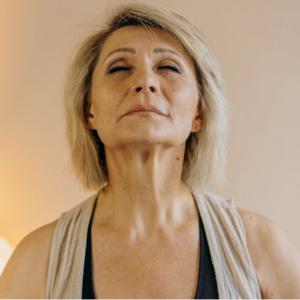Sun And Skin: What’s Your Skin Cancer Risk?

Sun And Skin: What’s Your Skin Cancer Risk?
July 20, 2022
At this point in your life, you’ve likely been reminded many times. Maybe in your younger years, you would lay in the sun all day and let your body soak up the rays (and your skin turn the color of sunburn)- but you likely no longer do that. You now know that staying out in the sun too long- especially without sunblock protection- is dangerous and can lead to a diagnosis of skin cancer. What you may not realize is that no matter how careful you are now, you may nonetheless be at risk for such a diagnosis, especially if you had a case of blistering sunburn as a younger person, or you have a family history of skin cancer. You can also be at risk for skin cancer even if you don’t get a sunburn from overexposure. Especially as our population ages (with older adults having been exposed to more harmful UV rays, along with weaker immune systems), it’s not surprising that 1 in 5 Americans will develop skin cancer by the age of 70. For a good overview of the types of skin cancer, including photos that illustrate what different types may look like, grab your sun visor and read here.
Basal cell carcinoma is the most common type of skin cancer, which begins on the outer layer of skin when epidermis cells of the skin grow at an out-of-control rate. You can read in-depth about basal cell carcinoma here. It’s less aggressive than other types of skin cancers and if caught early it is highly treatable. Melanoma is the most deadly form of skin cancer, especially if not caught before it metastasizes. 100,000 Americans are diagnosed with melanoma each year and it can be missed early on because it can pop up in expected places, including the soles of your feet, your scalp, or even under your fingernails. While melanoma is more rare than other types of skin cancer, it accounts for the majority of skin cancer deaths, with over 7,500 deaths per year as a result (more men than women). In the UK it appears that men also have a higher risk of melanoma death than women. Reasons for this? Lots of hypotheses, including more exposure to sunnier places around the world, due to cheaper airfare and perhaps less use of sunscreen. In fact, a recent research study published in the Journal of the Dermatology Nurses’ Association found that older women are more likely to use sunscreen than older men, though reminders from spouses or significant others can influence male behavior on this topic.
The risk of melanoma increases with age so that 65 is the average age of those diagnosed. There has been some research recently published that eating fish could put you at higher risk for developing melanoma, though experts warn that more research is needed and that it’s likely the heavy metals in the fish may cause problems rather than the fish itself. What about moles? Does having an existing mole put you at higher risk? Apparently, having an existing mole does not mean you are inherently more at risk for melanoma, as it most commonly starts with normal skin and not a mole. Nonetheless, as you age, it’s important for you to have regular check-ins with a dermatologist to make a visual map of your body, and to track moles or other skin irregularities that could be a sign of a growing skin cancer. As you may know, the test for determining whether a spot on your skin is suspicious is called the ABCDE test, which refers to looking for asymmetrical spots, with rough borders, strange colors, growing diameter, and changing or evolving visual appearance. If you haven’t made it to your dermatologist recently, and are worried about suspicious spots on your body, there are now apps that allow you to take detailed and accurate photos you can send in for a preliminary discussion of what you’re seeing. As examples, take a look at the following websites: MoleMapper, SkinVision, and Miiskin.
No matter your age or risk factors, it still makes sense to take all the precautions you can this summer, including sufficient daily sunblock (even if the sun is not out). Given that using sunblock can give you a false sense of security (yes, harmful rays will still get through even with sunblock) you need to make sure you reapply frequently and use sufficient amounts on your body (it’s thought that a full shot glass is the right quantity to cover your body fully). While recommendations for the best sunblock may change year to year (here’s a suggested list for 2022), experts report that unless an expiration date on the packaging tells you otherwise, a bottle of sunblock or sunscreen should be effective for 3 years. Finally, there’s a growing industry of clothing treated with UPF (UV ray protection). While you may have sunblock on your exposed skin, UV rays can still penetrate your skin underneath clothing, so getting that extra protection with treated fabric will help you take extra precautions. So slip on that rashguard and read more here.







